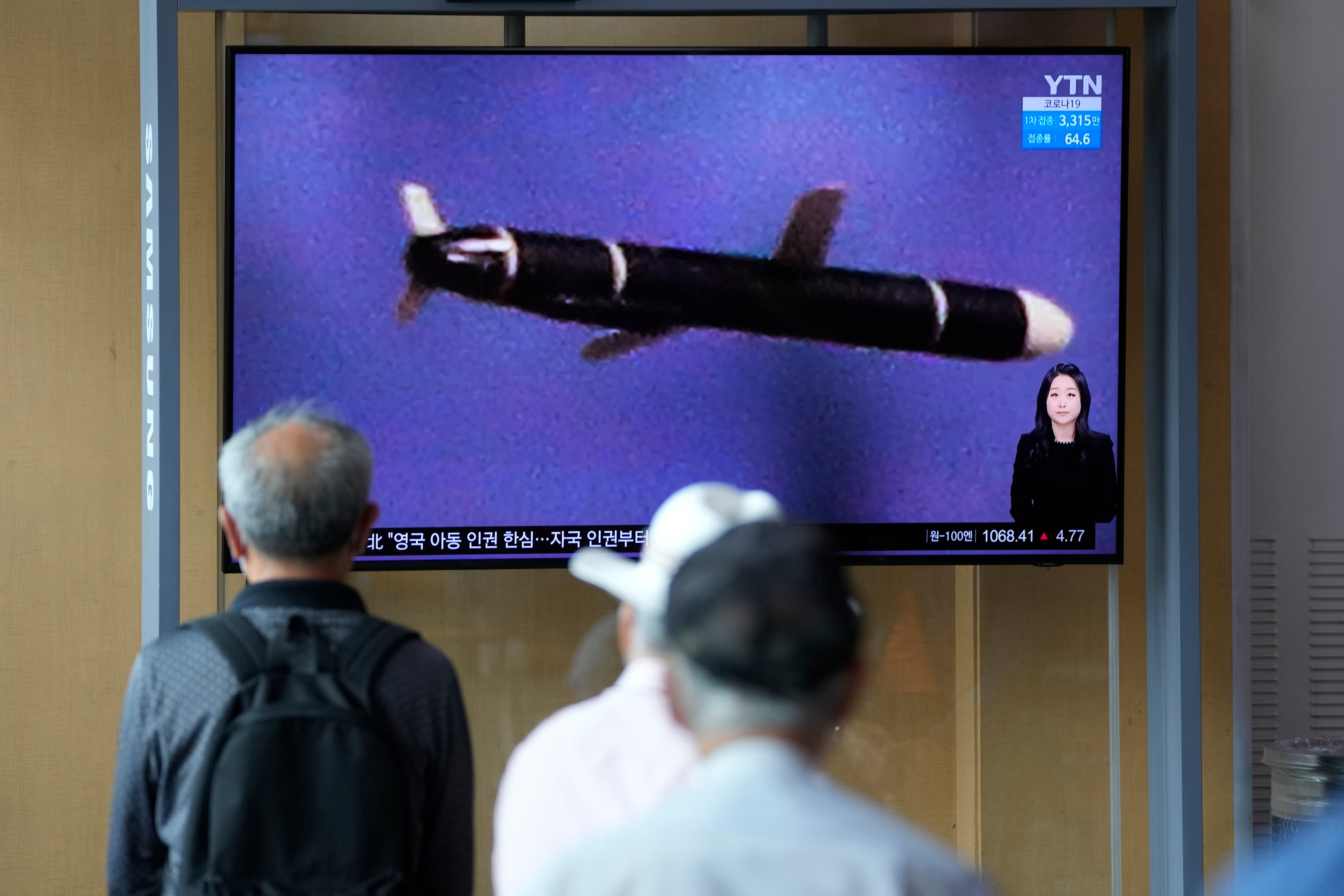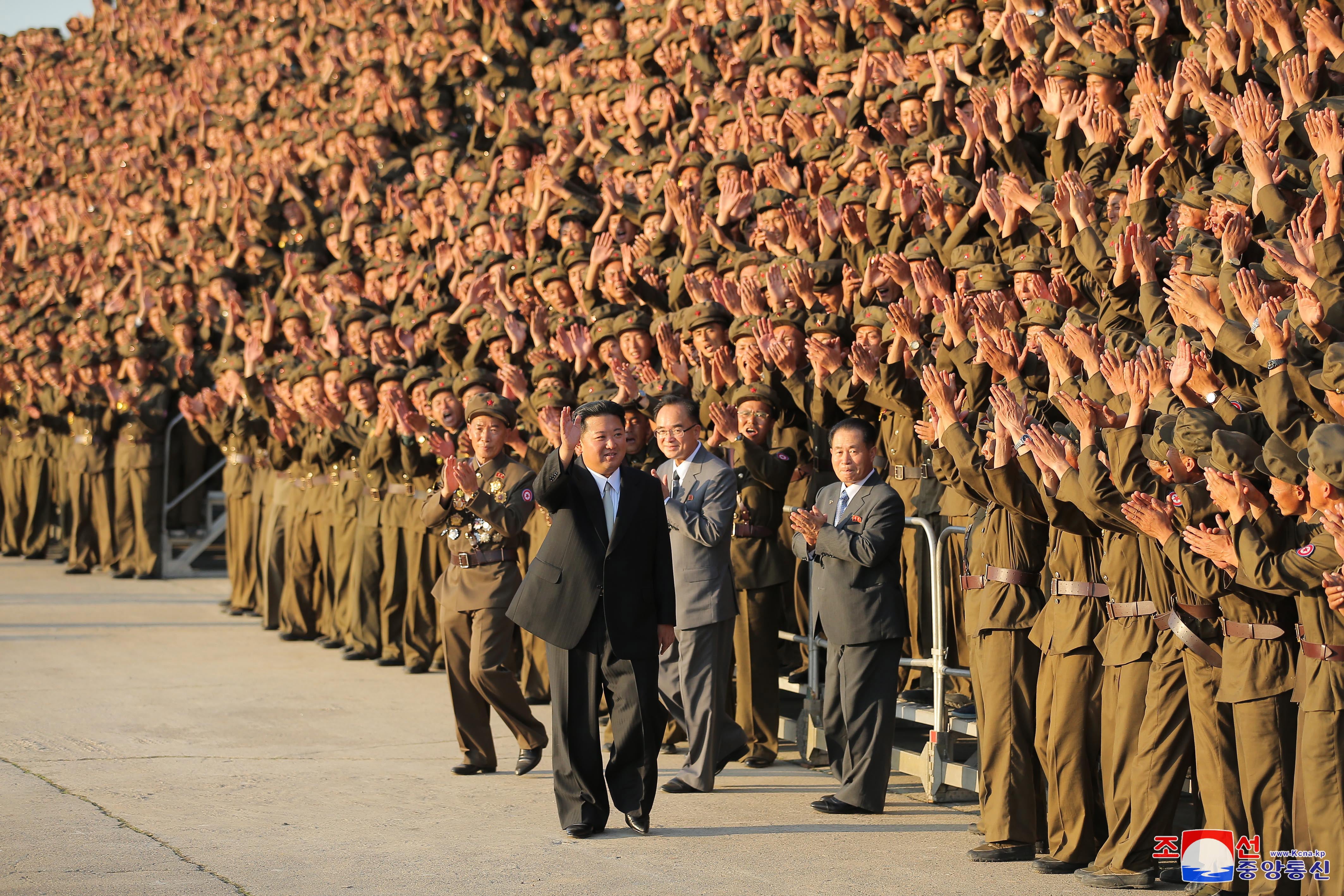North Korea cruise missile test highlights regional threats of Pyongyang to US allies, say experts
North Korea’s breakthrough test of a ‘strategic’ cruise missile could provoke a tougher approach, including tougher sanctions and missile defences from the US and allies, experts tell Shweta Sharma


North Korea said it successfully tested its first “strategic” new long-range cruise missile over the weekend, stoking renewed concerns among US allies in South Korea and Japan by boosting arsenal capabilities that can strike targets in east Asia.
The new missile is capable of hitting targets at a distance of 1,500km (930 miles), according to the state-run Korean Central News Agency (KNCA) – a range that would make it capable of hitting much of Japan.
The test launch came just a day ahead of a meeting between chief nuclear negotiators of the US, Japan and South Korea to work out a plan to break the stand-off with North Korea. China’s foreign minister will also visit Seoul.
Experts say the cruise missile test comes at a significant time and is crucial to North Korea even though UN Security Council sanctions forbid North Korea from testing ballistic missiles but not cruise missiles.
Jagannath Panda, a research fellow and co-ordinator of the East Asia Centre at defence studies and analysis, told The Independent the missile launch has highlighted its regional ambitions and is significant to the future of North Korea-US dialogue.
“The trilateral meetings are critical elements of east Asian security architecture. It is a clear signal that North Korea is not under any pressure by the US, Japan and South Korea trilateral meeting,” he said.
What makes this test provocative is North Korea’s public statement that these cruise missiles are a ‘strategic’ weapon, implying an intention to miniaturise nuclear warheads to fit on them
“The tests come at a right time to signal that North Korea’s authoritarian posture is alive in the region and after a gap when Kim Jong-un has come out of his health crisis, and the Biden administration made advancement on North Korea policy to some extent,” added Mr Panda.
North Korea called it a “strategic weapon of great significance”, raising the alarm among defence experts who said it implies a nuclear-capable system and the use of warheads.
“What makes this test provocative is North Korea’s public statement that these cruise missiles are a ‘strategic’ weapon, implying an intention to miniaturise nuclear warheads to fit on them,” said Leif-Eric Easley, associate professor of international studies at Ewha Womans University in Seoul.
Prof Easley told The Independent that cruise missiles might not be able to travel as far or as fast as ballistic missiles, but they are manoeuvrable and fly lower to the ground, making them more difficult to detect and intercept.
Experts note that missiles in the latest launch resemble the US Tomahawk cruise missiles and are designed to overwhelm the missile defences of North Korea’s neighbours.
“Cruise missiles are almost like little aeroplanes – they can be very accurate,” Melissa Hanham, an affiliate at Stanford University’s Center for International Security and Cooperation, told the Associated Press. “They can turn corners. They can go into valleys where radars would not see them easily. It would be a much more difficult problem for South Korea and Japan to monitor.”

With Saturday and Sunday’s test launch, North Korea has expanded its arsenal to both ballistic missiles and cruise missiles. This could have far reaching implications in the east Asia region, forcing countries to adopt different positions, said Mr Panda.
North Korea is banned from developing and testing ballistic missiles by a series of resolutions from the United Nations Security Council. The cruise missile tests are allowed but remain a matter of concern among observers as Pyongyang continues to expand its military capabilities amid a prolonged deadlock in nuclear talks with the United States.
Panda said the UNSC should consider banning cruise missiles too if similar tests continue.
The launch is the latest in a series of tests which are often seen as provocations towards the US and its allies. The US has been calling for North Korea to give up on its nuclear weapon programme and fraught relations under the Trump administration have carried over to Joe Biden’s presidency.
The North Korean leader had unilaterally halted nuclear bomb and long-range ballistic missile testing in 2018 when he initiated diplomatic relations with Trump while attempting to leverage his arsenal for sanctions relief.
But North Korea’s stock of nuclear weapons has shot up in the past four years despite Trump’s high profile meetings with Mr Kim.
North Korea’s growing capabilities may call for a tougher approach, including strengthening sanctions and missile defences
On Monday, the US military said the tests posed threats to the international community while neighbouring Japan said it had “significant concerns”, about it.
“The Biden administration has so far taken a measured approach to North Korea, emphasising denuclearisation but also opened the door to diplomacy. North Korea’s growing capabilities may call for a tougher approach, including strengthening sanctions and missile defences,” said Prof Easley.
Mr Panda believes that the Biden administration policy is not going to be different from the Trump administration. “But what is to be seen is whether the Biden administration really reiterates calls for more sanctions and more pressure on the North Koreans,” he said.
The latest launch was followed by a scaled-down military parade held after midnight in Pyongyang to celebrate North Korea’s 73rd founding anniversary.
Analysts saw it as a significantly less assertive display by a nation that often uses such parades to show off its military power.
Mr Panda believes that the scaled-down celebration, unlike the usual flexing of muscle power, was “intentional and to attract attention”.
“I think that was the signalling strategy. And to that extent, he succeeded in what he was doing because he wanted to give a surprise to the neighbouring countries and to the region, particularly when enormous incidents were happening in the Afghanistan region,” he said.






Join our commenting forum
Join thought-provoking conversations, follow other Independent readers and see their replies
Comments